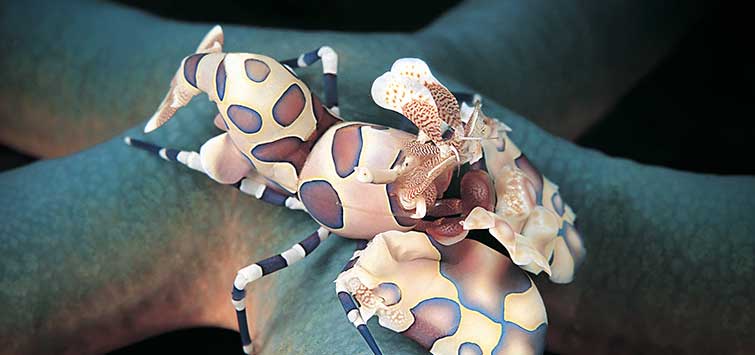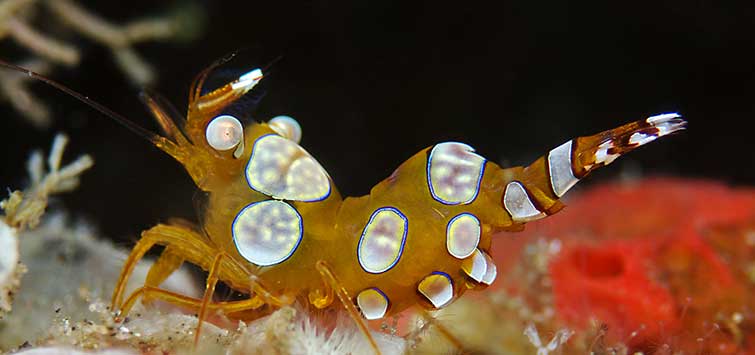Hymenocera picta
Common Names: Harlequin shrimp, clown shrimp, painted shrimp, dancing shrimp
Phylum: Arthropoda
Class: Malacostraca
Order: Decapoda
Family: Gnathophyllidae
Range: East Africa, the Red Sea to Indonesia, northern Australia to Hawai‘i, and Panama and the Galapagos Islands
Natural Environment: These exceptionally pretty shrimp, which reach about 2 inches in length, inhabit shallow protected inshore areas and are often found among coral branches. They often live as mated pairs, a situation in which they can become quite territorial.
Water Requirements: Calcium 380 to 430 mg/l, alkalinity 2.5 to 3.5 meq/l, pH 8.1 to 8.2, specific gravity 1.024 to 1.026, and a temperature range of 75° to 85°F.
Captive Care
Feeding
These shrimp can do well in reef systems provided you are willing to meet their unique dietary needs—they will only eat live sea stars. Note the emphasis on live, as they will not touch a dead or defrosted frozen sea star. A star about 4 to 6 inches in diameter will be consumed in about four weeks.
Watching a living sea star torn apart and eaten may not be the thing you want to witness in your home aquarium! In fact, the shrimp will turn over the star so it can’t escape and begin nibbling from its leg tip inward to the central disc. Besides being carnivorous, they are very territorial, so only one or a mated pair can be kept in the same aquarium.
They are not overly fussy about which sea stars they will consume, although I have found that they especially like the blue Linckia laevigata, which is almost as expensive as they are! They will also eat small chocolate chip stars Protoreaster nodosus, those in the genus Fromia, and some of the sand-sifting stars. Luckily, they will also consume the Asterina stars that often proliferate among live rock and are therefore quite useful in controlling the population of such creatures—if one can live with their gruesome feeding behavior.
Acclimation
Keep in mind that all shrimp should be slowly acclimated to their new surroundings, as they have a tendency to go into shock when entering an aquarium where water parameters are even slightly different from the shipping container. Temperature and especially specific gravity should be the same before transferring them to their permanent home.
Contrary to what you may have heard, shrimp of any kind should never be given a freshwater bath to kill parasites prior to being added to the aquarium. It will kill them, as they are very sensitive to changes in osmotic pressure.
Molting
As with all shrimp, calcium, iodine, and magnesium are essential for molting, and none of these should dip to low levels. Molting is the process of shedding the shrimp’s shell-like exoskeleton, which allows the shrimp to grow. To grow larger, a shrimp must shed this exoskeleton, as it will not stretch. A new exoskeleton continuously develops underneath the old one, which is shed once the new exoskeleton is ready.
When the process completes, the exoskeleton splits open and the shrimp climbs out. Then it takes up water, stretching the folds out of the new soft covering to fit its now larger body. The new covering then hardens. Keep in mind that they are defenseless at molting time and need secure hiding places that predators cannot reach.

.png?h=595&iar=0&w=2781&hash=5FD5E69473BCC22199FBFA2FB71B6033)



